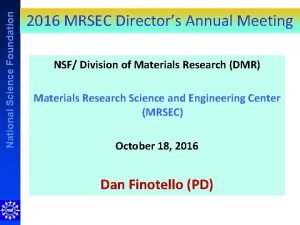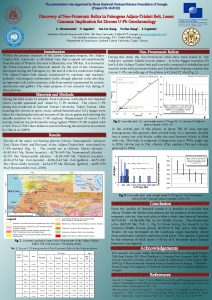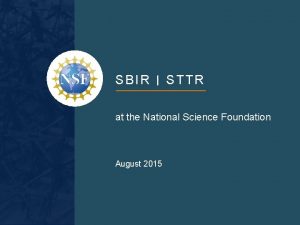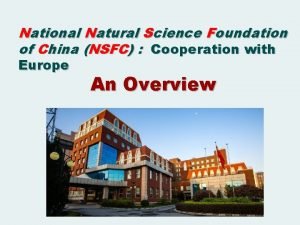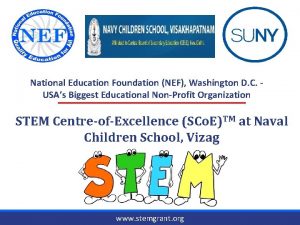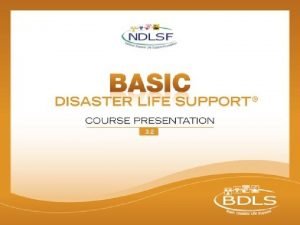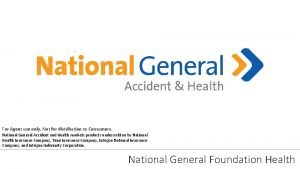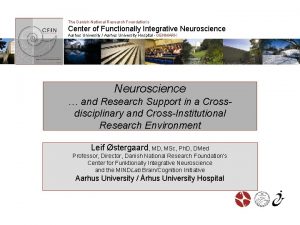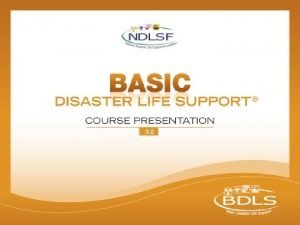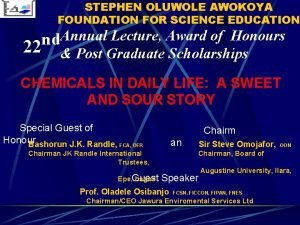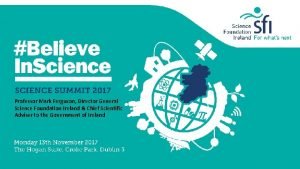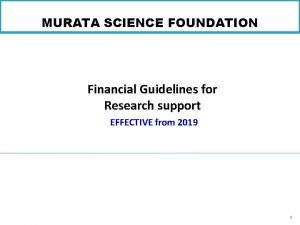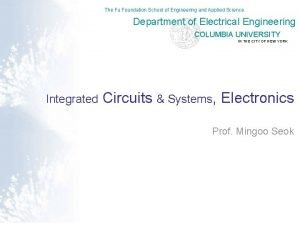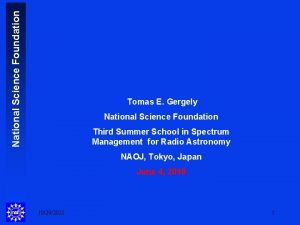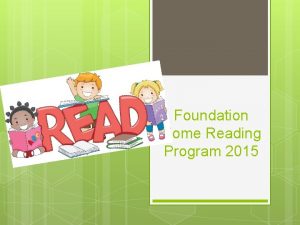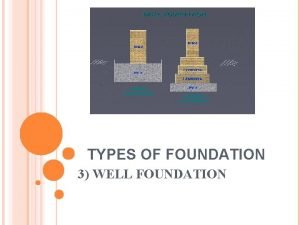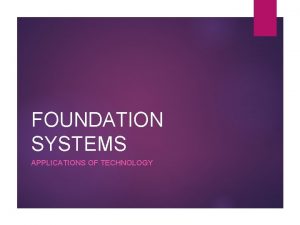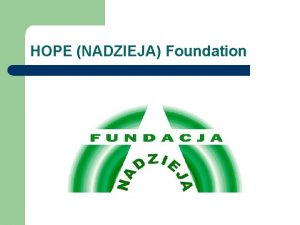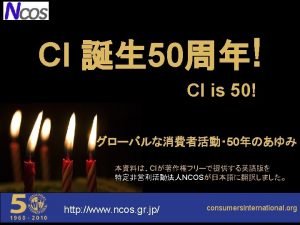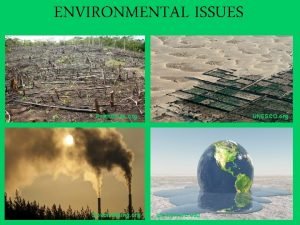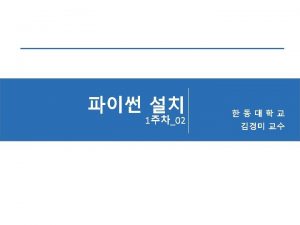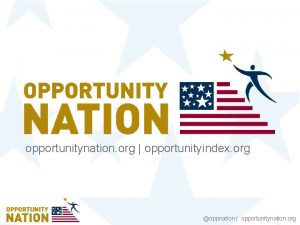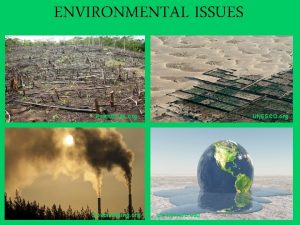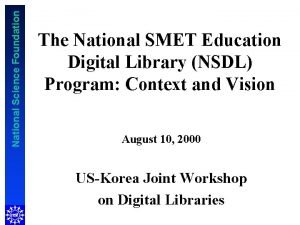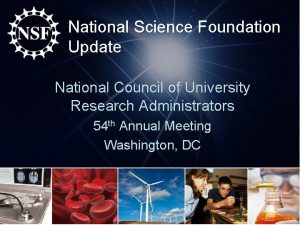National Science Foundation MRSEC Program mrsec org mrfn

















- Slides: 17

National Science Foundation MRSEC Program mrsec. org; mrfn. org Division of Materials Research Science and Engineering Center (MRSEC) June 8, 2017 Dan Finotello

National Science Foundation MRSEC History • 1960 -61 - Interdisciplinary Research Labs (IDLs) -ARPA • 1971 - Proposal to transfer IDLs to NSF as a result of the Mansfield Amendment • 1972 - NSF establishes DMR, MRL program • 1994 - DMR establishes MRSEC program • 2010 - DMR establishes CEMRI (Centers) and MIRT (small team) programs • 2013 - DMR drops CEMRI/MIRT nomenclature and returns program name back to MRSEC with no MIRT • 2016 – MRSEC: Just Completed

National Science Foundation NSF Centers 2011 CEMRI IDL/MRL University Year Initiated Cornell 1960 Pennsylvania 1960 Northwestern 1960 Chicago 1961 Harvard 1961 MIT 1961 Pennsylvania State 1974 Ohio State 1982

National Science Foundation MRSEC “Uniqueness” • Six Years Awards • Site Visits in Years 2 and 4 • Re-competition model: they do not sunset • Made of Interdisciplinary Research Groups, IRGs; currently 2 to 3 IRGs. • Faculty participants of different expertise and involving several departments • Industrial and International participation: Transdisciplinary

National Science Foundation MRSEC Program Goals / Achievements • Stimulate and support outstanding interdisciplinary research and education in materials of a scope and complexity that requires a center. All students, in or out of MRSEC benefit from it. • Critical mass of investigators of complementary/diverse expertise • Address fundamental, complex materials problems that are intellectually challenging and important to society • Foster partnerships between academia and industry, National labs, and international: transdisciplinarity • Re-competition model and Seed program provide a mechanism for a reinvention and adaptation to address emerging areas (flexibility) • Leveraging of funds; Attract faculty • Start-ups; Patents • Materials Network Facilities Network, www. mrfn. org

National Science Foundation Interdisciplinary Research Groups (IRG): Core Unit • Each IRG (6 -12 senior participants): – Addresses a major materials topic or area synergistically – Is more than a ‘collection of individual investigators’ – Typical IRG effort includes synthesis, theory, characterization, evaluation, and maybe applications – IRGs map onto Individual Investigator Programs; MRSEC may contain dissimilar IRGs: a unique center feature. • Collectively, the MRSEC IRG topics cover the entire research breadth that DMR addresses as a division

National Science Foundation

National Science Foundation Structure of a MRSEC “The Umbrella” • Education (precollege to postdoctoral) and development of human resources. – Required Research Experience for Undergraduates (REU) program. • Active collaborations with industry and other sectors. • Shared experimental facilities (networked). • Flexibility to develop new areas, support for ‘SEEDs. ’

National Science Foundation SEED Program • 10% of the overall budget devoted to SEED projects • All inclusive internal competition • 1 -2 years projects • Seed support for junior faculty and for investigators changing fields; • Emerging areas of interdisciplinary research; • Programs to link the university effort in materials with industry, national laboratories, and other sectors; • The development of tools and cyber infrastructure for remote access to instrumentation; • Innovative interdisciplinary educational ventures • Complementary to IRGs or to Nucleate new IRGs

National Science Foundation MRSEC Expenditures 2016 % of Fixed Total Budget, $56 M/yr 5. 1 12. 9 1. 3 61. 1 9. 2 10. 4 IRGs Industry Seeds Shared Facilities Education Administration Majority of Research funds (IRGs + Seeds) pay for Graduate student and Post-doc salaries.

National Science Foundation High Impact 21 MRSECs (2016) • 56 IRGs • 926 publications (42% 2+ authors)(range 20% - 56%) • 49 patents awarded (yearly ave. ) 21 MRSEC (2016) 796 (608) supported TTF participants (21 -27%F; 8 -10%URM); 28% PHY, 21. 5% CHE, 17. 7% MS, 10. 3% each EE & CE • 836 GS (25. 1% F, 7. 7% URM)+ 180 UGS (46% F, 16% URM) • 298 Post-docs (24. 8% F, 7. 7% URM)

National Science Foundation MRFN Statistics 23 centers 1141 instruments 255 experts Recently added instruments Thermogravimetric Analyzer Mass Spectrometer Infrastructure mrfn. org/instruments >1140 Instruments Yearly Users of MRSEC Facilities > 1380 Academic > 530 Industry >50 National Labs 743 Publications acknowledged MRSEC SF • 75 MRSEC Technical Staff in SEFs • 31 Other Technicians • 51 Administrative Staff • 37 Education Staff

National Science Foundation https: //mrsec. org/facilities Book an Instrument The Materials Research Facilities Network is a nationwide partnership of the Shared Experimental Facilities (SEFs) supported by the National Science Foundation's Material Research Science and Engineering Centers (MRSECs). The MRFN is designed and operated to provide support to researchers and experimental facilities engaged in the broad area of Materials Research in academic, government and industrial laboratories around the world. • • • Search for Instruments at Member Facilities Find and Work with Technical Experts Access Training and Educational Materials Browse the Above Categories by Instrument Type Log in and Update your Center's Information The MRFN enhances investigation of material synthesis, characterization, and theory by providing researchers at diverse institutions with unprecedented access to the cutting-edge facilities, instrumentation, techniques, and collaborators available at MRSEC Shared Experimental Facilities, which are geographically spread throughout the United States at major research universities. The MRFN is also the nexus point for the operators, managers, and directors of MRSEC SEFs for documenting best practices, conferring with colleagues, and sharing expertise and tools to enhance and streamline the operation of their shared facilities. Finally, MRFN collects documentation for training and teaching protocols for the instrumentation it supports.

MRSEC Startup Companies 14 12 10 8 6 4 2 0 1996 1997 1998 1999 2000 2001 2002 2003 2004 2005 2006 2007 2008 2009 2010 2011 2012 2013 2014 National Science Foundation Innovation Since 1985: 148 companies in 22 states plus 3 abroad employing > 2550 individuals; More than 1500 patents awarded

National Science Foundation 2016 MRSEC Competition: 2 or 3 IRGs Solicitation Published: March, 2016 Pre-Proposals Due Date: July 1, 2016 Panels evaluate IRGs Panels: 7 -8 panels, September 7 – 30, 2016 Full Proposal Invitations: October 6, 2016 Full Proposals Due Date: December 2, 2016 Mail Review Reverse Site Visits: Invitations: Mid March 2017 Panels: Mid April to Mid May 2017 Recommendations To DGA: First week in June

National Science Foundation 2016/2017 MRSEC Competition Otcomes Received 80 MRSEC preliminary proposals including 221 IRGs by the July 1, 2016 submission deadline. After checking for compliance with the solicitation and the NSF Grant Proposal Guide, five preliminary proposals were Returned Without Review (RWR). Research not aligned with DMR The 75 MRSEC preliminary center proposals included 206 IRGs and were separated into 7 interdisciplinary topical panels and reviewed by a total of 100 individuals. Overall a total 885 reviews were submitted corresponding to an average of 4. 3 reviews per IRG. The MRSEC Program recommended inviting 18 Full Proposal Submissions including 43 of 206 IRGs Evaluation of 252 IRG separate reviews (nearly 6 reviews per IRG) provided by 123 reviewers, the MRSEC program recommended to invited 10 MRSEC proposals with 26 IRGs to the April/May 2017 reverse site visits (RSV).

National Science Foundation September 2017: 20 MRSECs CLASS of 2014; 12 Awards: National investment in the areas of sustainable energy, bio- and soft-materials, polymers, nanoscience, next-generation electronics and photonics, condensed matter physics: Brandeis, Chicago, Colorado, Columbia, Harvard, Minnesota, MIT, Nebraska, NYU, Ohio State, Penn State, Princeton. CLASS of 2017; 8 Awards: TBA by September 1, 2017
 Mrsec science slam
Mrsec science slam Shota rustaveli national science foundation
Shota rustaveli national science foundation Nsf sbir deadlines
Nsf sbir deadlines National natural science foundation of china
National natural science foundation of china My favorite subject is science
My favorite subject is science Shallow pad foundation
Shallow pad foundation Foundation standard 1 academic foundation
Foundation standard 1 academic foundation National education foundation nef
National education foundation nef National disaster life support foundation
National disaster life support foundation National general 888-781-0585
National general 888-781-0585 Danish science foundation
Danish science foundation National disaster life support foundation
National disaster life support foundation Stephen oluwole awokoya
Stephen oluwole awokoya Professor mark ferguson
Professor mark ferguson Murata science foundation
Murata science foundation Israel science foundation
Israel science foundation Science foundation arizona
Science foundation arizona Fu foundation school of engineering and applied science
Fu foundation school of engineering and applied science
